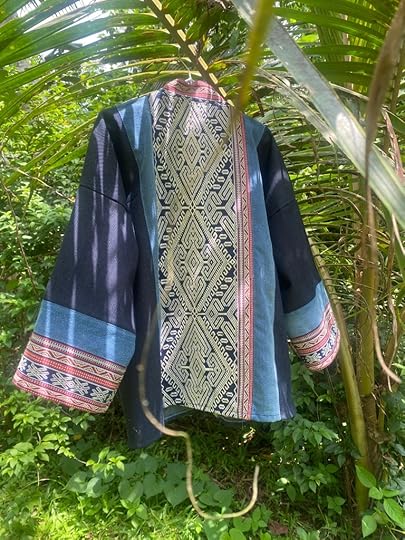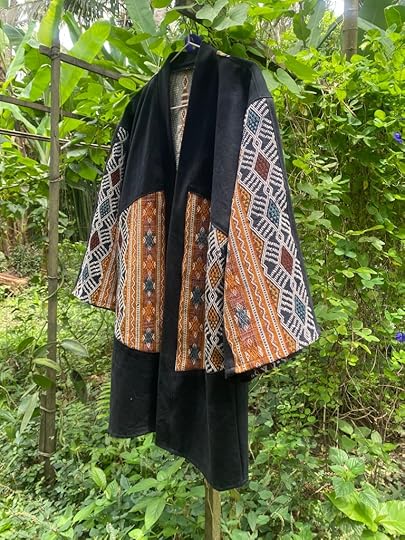Rewilded Design
My fascination with rewilding began when I first read the previously mentioned book Feral by George Monbiot, where the concept is deeply rooted in ecological restoration—allowing nature to evolve freely, without human-imposed constraints. Over time, I have come to see rewilding as a principle that extends far beyond ecology. It has become a guiding force in my research, my creative work, and my daily existence. Rewilding means stepping away from rigid structures and reclaiming the fluidity of natural rhythms. It is at times an act of unlearning, of shedding the cultural conditioning that tames and constraints, allowing intuition and curiosity to lead the way.
 Wearable Art, rewilded by Southeast Saga
Wearable Art, rewilded by Southeast SagaIn my research on rewilded product design and aesthetics, I have come to the realization that creating rewilded design objects requires a release of control. Just as rewilding in nature involves creating favorable conditions and then stepping back to let ecosystems take over, rewilding in design means moving away from objects that are rigidly finished at the point of creation. Instead of producing objects that degrade the moment they leave the designer’s hands, we should be designing things that evolve and mature—things that grow more beautiful with use, wear, and time.
Rewilded design objects should be designed with the potential for transformation embedded within them: their “final” expression never truly being final but unfolding through interaction, iterations, aging, and adaptation. I imagine the aesthetic of the rewilded design object being a celebration of the passage of time, of wear caused by frequent (loving) use, and of the maturing, raw, and imperfect. Surrendering to the material and letting it take the lead could, aligned herewith, be a way of working with rewilding as a part of the design process. A rewilded object, like a rewilded landscape, carries the traces of the creation time and is open to the imprint of use and the story of its existence.
I have previously, on the blog and in my books, written extensively about the oddity of fully completing a design object before it is ever used. If an object is meant to be lived with—to be used, worn, touched, interacted with—why make it so “picture perfect” that any trace of use diminishes its value? Why design impeccably sleek chairs that lose their allure at the first scratch, or pristine garments that become flawed with the stain or the first loose thread? Such objects are closed—sealed off from the possibility of flexibility and development, unable to form a lasting bond with their users. Closed, smooth design objects begin a slow decline the very moment they are put to use, moving toward inevitable rejection.
But imagine for a second if decay and user traces weren’t seen as damage but as transformation, a natural part of an object’s lifecycle?
 Reborn Kimono by Southeast Saga
Reborn Kimono by Southeast SagaAligned with ecological rewilding, rewilding design objects requires relinquishing a degree of control. Of course, a designer should have intentions and infuse objects with thoughtful aesthetics and storytelling. But instead of dictating a fixed, final form, the truly sustainable designer should allow space for evolution; work it into the object from the start. This could be a way of welcoming the marks of use, the patina of time, and the individual imprint of the user.
Designing with openness and creating objects that are raw, adaptable, and receptive to change and usage is a way of welcoming a new kind of beauty. A beauty that does not rely on smoothness or perfection but finds its depth in wear, in texture, in imperfection. The aesthetics of the rewilded design-object celebrate diversity, decay, and the richness of lived experience—offering a much-needed alternative to the sterile, disposable culture of mass consumption.



